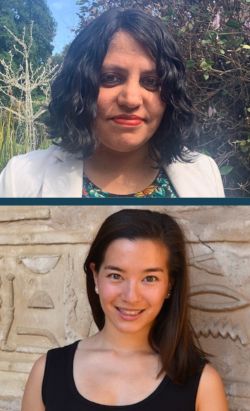 Photo Credit: Eric Lee/Bloomberg
Photo Credit: Eric Lee/Bloomberg
Nothing Changes Until the Narrative Changes
 At Haas, Jr. Fund partner Asian American Futures, Reshma Shamasunder and Kana Hammon are leading an effort to advance a shared story—and a shared future—for Asian American, Native Hawaiian and Pacific Islander (AANHPI) communities.
At Haas, Jr. Fund partner Asian American Futures, Reshma Shamasunder and Kana Hammon are leading an effort to advance a shared story—and a shared future—for Asian American, Native Hawaiian and Pacific Islander (AANHPI) communities.
Across the organization's programs such as Activate California and the Catalyst Lab, Asian American Futures provides a range of resources to community-based groups so they can harness powerful narratives to build AANHPI power. And through investments in research, field testing and other activities, the organization is helping grassroots AANHPI leaders find those stories and messages that assure their communities are “seen, heard, empowered and united.”
Shamasunder is executive director of Asian American Futures, and Hammon is the organization’s narrative strategist. We recently talked with them about why narrative work is critical to Asian American Futures’ mission to “shape a powerful AANHPI majority.”
Why Narrative?
Hammon: I grew up in a Japanese American family. I was steeped in the stories of family members experiencing incarceration during World War II and the atomic bombing in Japan. As I got older, I started to realize the stories we were telling around our dinner table were very different than the stories of other American families. For me, narrative work means closing those gaps in understanding and bringing more people into our campaigns for social justice.
Shamasunder: When I was working on immigration issues in California in the early 2000s, we would get a lot of hate mail. It’s easy to forget that California was an anti-immigrant state at the time. We set out to change the conversation on these issues and lift up immigrants’ contributions. And that work started to have domino effects as we won on issue after issue: drivers licenses, the Trust Act, healthcare access and more. Today, California is the most pro-immigrant state in the country, and a lot of that has to do with how the movement changed the narrative.
Changing the Narrative About AANPHI Communities
Hammon: There’s a tendency in the AANHPI community to try to emphasize what we don’t want to be: the “model minority,” perpetual foreigners, or gatekeepers of who gets to be AANHPI. But not enough people talk about what we do want to be. That means standing up for a shared identity and building a community rooted in justice, interdependence, and self-determination alongside other communities of color.
Judging from the news coverage of the recent Supreme Court case on affirmative action, you’d think it was all about Asian Americans. But we were just being used as a wedge. At Asian American Futures, we worked with partners like Chinese for Affirmative Action and Xin Sheng Project to try and reframe the issue away from pitting one group against another and instead realizing our shared goals of equity and solidarity.
We don’t have to agree on everything. But at the same time, we see an opportunity to create a powerful majority that is working for a more just and inclusive future for all people.
Shamasunder: From 9-11 though Covid-19, so much of the conversation around AANHPI people in this country has been about fighting discrimination, anti-Asian rhetoric, and anti-Asian hate. We have been fighting for the right of our communities to exist without violence and discrimination. What we’re saying now is we want to build a more aspirational vision of who we are and who we can be and how we can work with others to create a just society.
“This is the Time to Invest”
Shamasunder: The lesson from decades of social justice work is that nothing changes until the narrative changes. There continues to be a huge underinvestment in insuring that our communities are at the forefront in the fight for racial justice.
This is the time to invest so we can build the power of our communities, especially in places outside LA and the Bay Area where AANHPI people are just starting to find their power and voice. We have seen again and again how narrative change helps people and communities find dignity and equity. Now we can show it once more by helping AANHPI communities answer the question, “What do we want to be?”